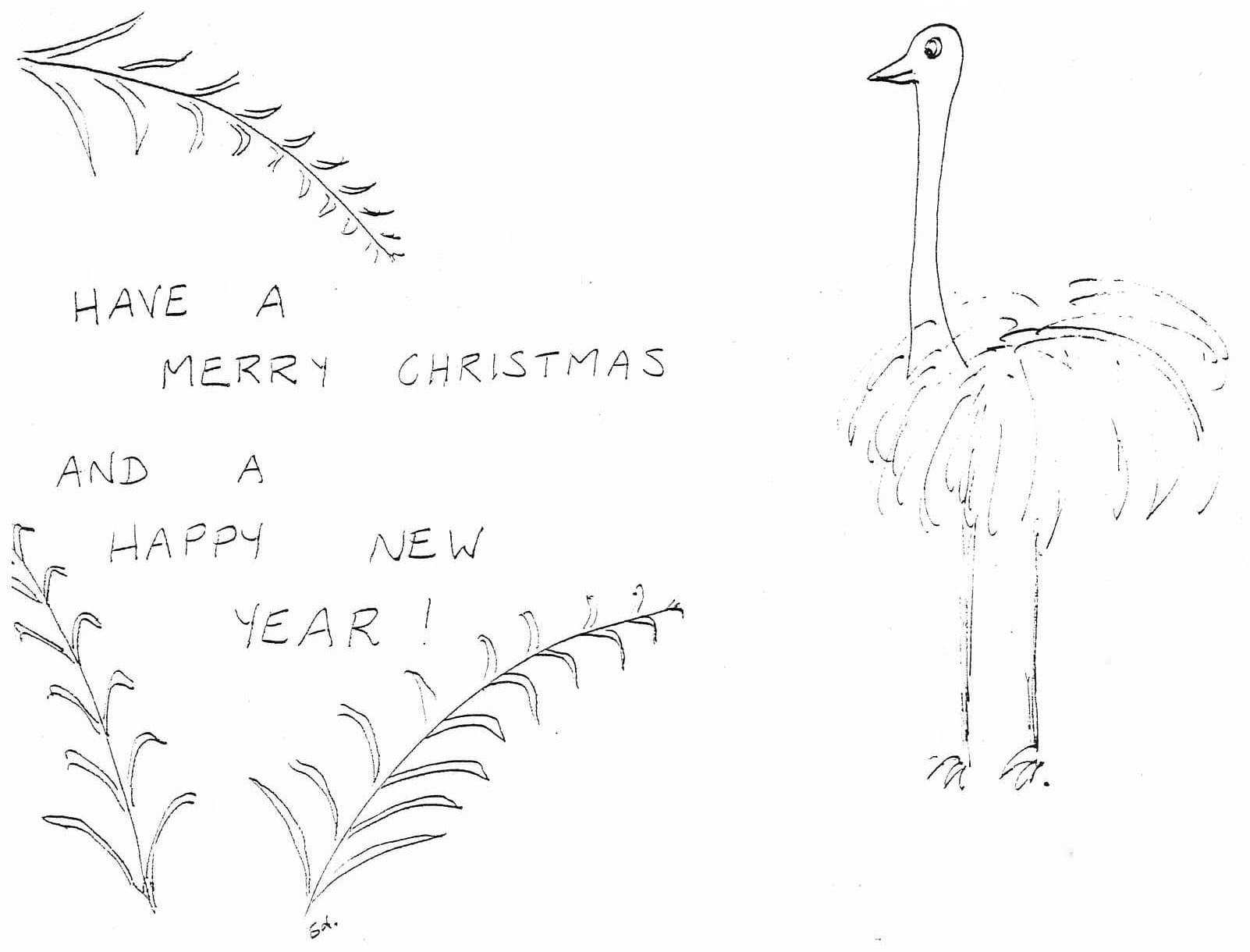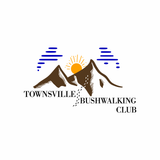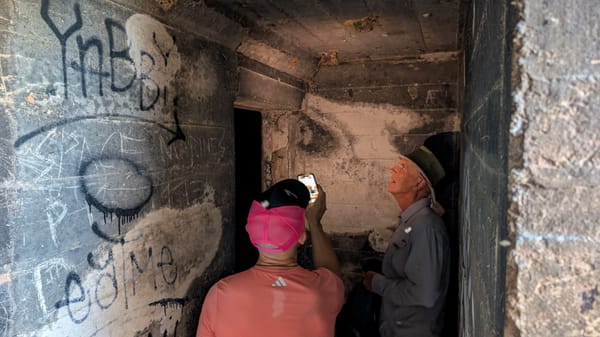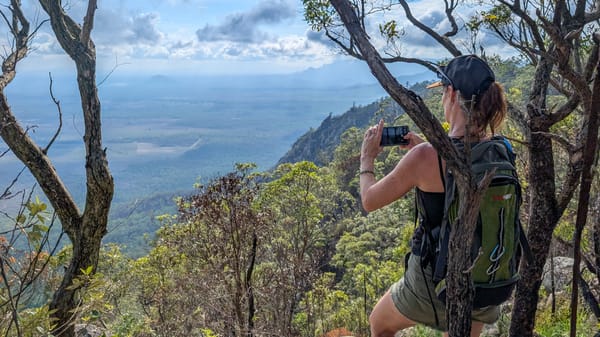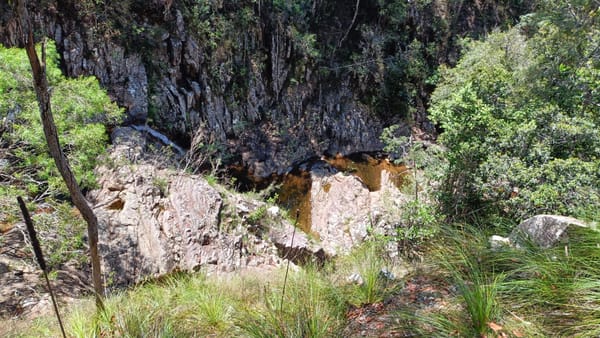Escape Magazine - December 1986
ESCAPE Xmas 1986: Townsville Bushwalkers wrap the year with North Queensland trip reports (Running River, Blue Gum Creek, Bartle Frere), safety notes on bullrouts & ticks, festive camp recipes, and the club’s 1960 origin story. 1987 meeting dates and new walks inside.
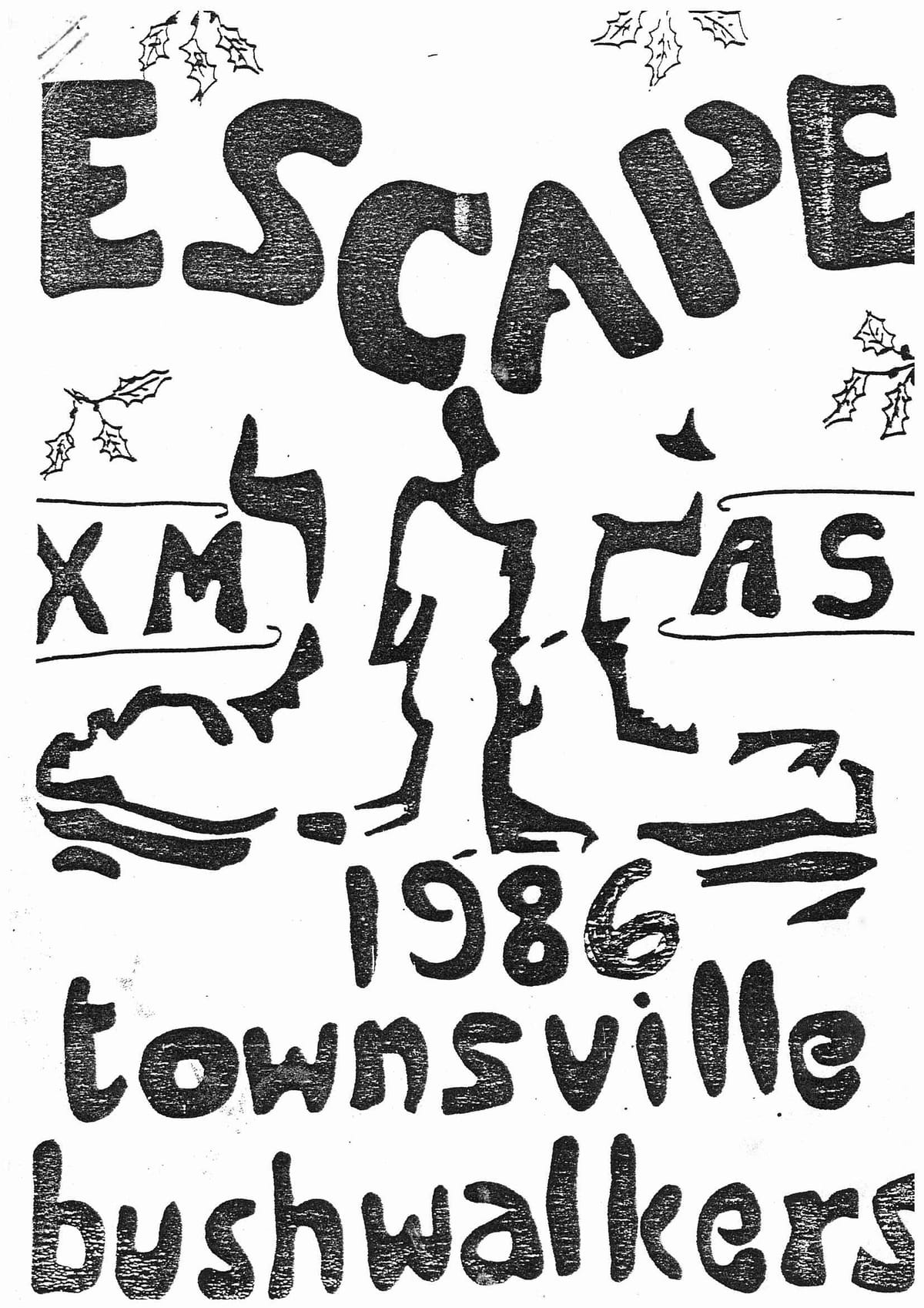
ESCAPE XMAS
1986
Townsville Bushwalkers
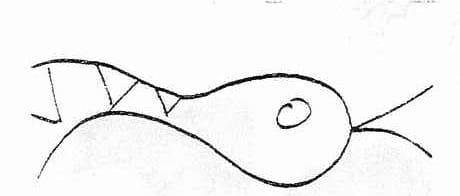
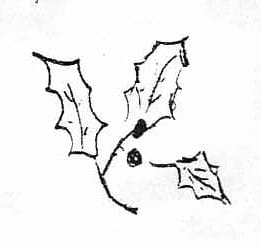

MERRY CHRISTMAS
EDITORIAL
Here we are at the end of the 1986 Bushwalking year. We've had some great times throughout the year despite the wet walks. I believe there were only a couple of dry weekend walks this year and some alternative walks were the result of rain in the areas of the scheduled walks. It's times like these when the bushwalkers take to the water and dust the cobwebs from their kayaks and rafts. All in all, it's been an enjoyable year.
We've made some new friends and farewelled old friends. I'd like to welcome back Diana, Larry and Judy. (although Larry and Judy are off overseas, I hear). I'd also like to welcome back Tony from his trip to Nepal.
I'd like to thank all those who contributed their time and efforts to the production of this special Christmas issue of the magazine. I'd especially like to thank Mary-Jane who did most of the typing. This is a time when most people are very busy and I very much appreciate those who made time to help.
The first meeting of 1987 will be on 21st January at the Aitkenvale Scout Hall. The time is to be advised. The first walk will be a 3 day trip. Next year we plan some new walks, so it will be a dynamic year for walking. I'd like to take this opportunity to wish everyone Merry Christmas and a Happy New Year, and I look forward to seeing everyone in the new bushwalking year if not sooner.
Editorial Panel: Glynis Lee and Bea Duffield.
CHRISTMAS RECIPES
CHRISTMAS FRUIT CAKE
- 150g natural currants
- 200g natural sultanas
- 200g sun-dried peaches
- 1 cup wholemeal flour
- 1 cup wholemeal self-raising flour
- 200g sun-dried pitted dates, diced
- 200g dehydrated pineapple pieces
- 2 cups pure water
- 3/4 cup cold-pressed vegetable oil
- 2 large very ripe bananas
- 100g pecan nut half kernels
- Presoak the currants, sultanas and peaches in the water at least 2 hours.
- In a large mixing bowl, mix the flours with the dates and pineapple.
- Drain the excess water from the presoaked fruit: retain 3/4 cup for use.
- Add the presoaked fruit to the mixture in the mixing bowl.
- Blend together the water, oil and bananas until smooth.
- Pour the blended liquid into the mixing bowl with the fruit and flour and thoroughly mix in.
- Brush a little oil over the inside surfaces of a 20cm-square cake tin.
- Pack the mixture into the tin, ensuring that no air pockets remain.
- Lightly brush a little oil over top of mixture.
- Bake for 2 - 3 hours at 135 C / 275 F.
YOGURT POTATO SALAD
- 1 pint yoghurt
- 1 1/2 teasp curry powder
- 1 1/2 teasp garlic salt
- 1 teaspoon carraway seeds
- 1 tablesp chopped onion
- 2 cups cold diced potatoes
Combine yoghurt and carraway seeds, curry powder, onion and garlic salt. Fold mixture into diced potatoes. Chill a few hours before serving.
HAM ROLLS
- 10 thin slices bread
- 125g butter
- 1 teasp french mustard
- 1 tablesp chopped parsley
- 1 dill cucumber
- 10 slices ham
- 2 teasp french mustard
- 1 teasp worcestershire sauce
- pepper
Beat butter until smooth and creamy, add mustard, worcestershire sauce, parsley and pepper; beat well. Fold in finely chopped cucumber. Spread butter mixture thinly and evenly over bread, remove crusts, roll each slice up firmly. Roll one slice of ham over each bread roll, overlapping ends. Secure ends with four small sticks evenly along edge; cut roll between sticks to give four pieces each.
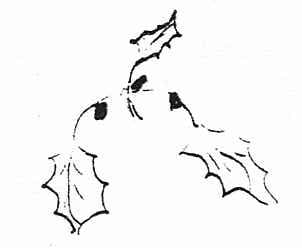
The Townsville Bushwalkers club is an equal opportunity organization, yet we have no women leading trips or starting camp fires.
IS THIS AN ANOMALY ?
(Who wrote this? Ed)
TOWNSVILLE N.F.C. BUSHWALKERS
LOOKING BACK
The sophisticated organisation that is our club today is accepted by most of its members with complacency, but how many of us have ever wondered how it was established & what type of men (& women) were responsible?
During the 1950s any bushwalking in the Townsville area was done by small groups of individuals. A few of the more dedicated of these eventually decided to try & ensure walks on a regular basis by establishing a bushwalking club.
In May 1960 a meeting was held at the then National Fitness Council centre on Charters Towers Road. This was the first recorded meeting of the Townsville N.F.C Bushwalkers. Attended by a group of seventeen potential members, it included a core of experienced walkers who had drifted to Townsville from bushwalking clubs in various parts of Australia. Also present was Mr. Dick Goon Chew, who as the local N.F.C officer encouraged the formation of the club & helped guide it through its early years. A Mr. W. Horsfall & Mr. P. Hetherington appear to have been the main motivators behind the clubs establishment.
The first walk held on 22nd May 1960 was to the Muntalunga Range. This can be seen just out of Townsville on the left as you drive towards Ayr. The second club meeting was held on this outing & the practice of alternating day & weekend walks on a fortnightly basis appears to have been decided upon then. Other club walks undertaken in that first year include Magnetic Island, Mt. Stuart, Margaret Creek Falls, & Crystal Creek.
Despite the good attendance at these early meetings (compare to 1986 meetings) the club came close to floundering in its first year, with some meetings being abandoned completely because of poor attendance. At this time various forms of advertising were tried in an attempt to increase membership. Perhaps this contributed to the improved attendance of meetings over the next couple of years & a more assured future for the club. All however was not smooth going.
The very brevity of the entries in the club minutes & the log book suggest the shock that was felt, when in June 1962 the president Peter Hetherington & another bushwalker John Burkett disappeared on a canoeing trip to Magnetic Island. Although their kayak, a paddle & a few miscellaneous possessions were found on a beach south of Ingham, there were few clues as to what could have happened & the cause of their disappearance is still a subject for speculation. A plaque in their memory can be seen on a peak just west of Mt Cook on Magnetic Island facing towards the Townsville airport.
During the 1960s the club had on permanent loan from one of its members a fourteen foot dugout outrigger canoe. The owner Mr. Ray Lane took five months to build it using only hand tools. He was working in Weipa at this time & he apparently had the natives in the area bewildered as to why he was going to so much trouble to build a canoe, when he could have simply done as they did & gone out & bought an aluminium dinghy. This canoe often featured in club outings in those early years. Ray by the way is one of at least two honary members of the club. Harry Hershaw is another. In May 1987 our club will be twenty seven years old. The club has seen a lot of members come and go in that time & quite a few of these past members are still resident in Townsville. It could be interesting to hold a social gathering sometime & invite past members along, some of their recollections of those earlier years would surely be worth hearing.
Charlie Allen.
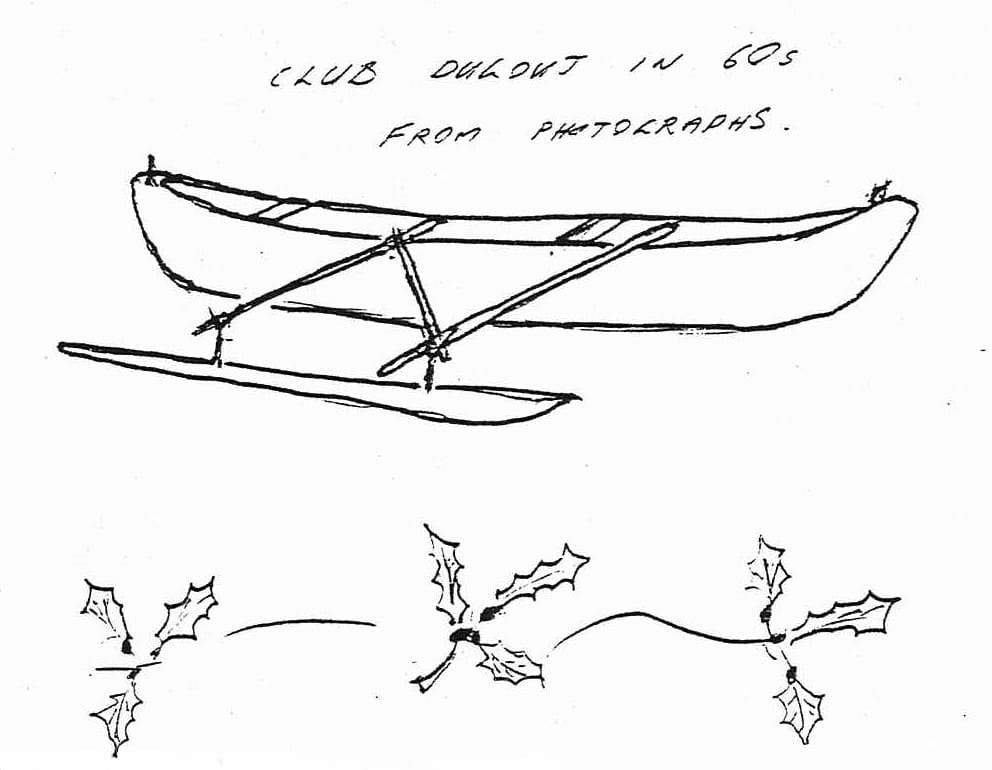
Memo to the editor.........
G'day. Here speaketh the latest expatriate to affiliate himself with your club. Having recently moved to this little corner of Oz, and ever on the lookout for a home amid the gum trees, I can think of no better way of meeting that end than to get out there and have a look around. And what better way but with an establishment such as The Townsville Bushwalking Club.
Despite being rather hard to find, the Townsville Bushwalking Club has proven to be friendly and its members both keen and experienced. The informality is refreshing though at times a bit confusing.
The venues available in this area are awesome. I look forward to many more pleasant and interesting weekends, for what better way is there to see this beautiful country of ours than from the comfortable seat of a Shanks' pony.
P.R.G. Morgan
BULLROUTS AND TICKS
(things the tourist brochures don't mention)
I've been living in North Queensland for thirteen years, and only this year heard of bullrouts and had my first scrub tick bite.
I became interested in bullrouts when Alan told me a friend of his had been stung by one in rapids in the Tully River. The pain was severe and he had to have pain killing injections and was admitted to hospital.
The bullrout belongs to the Scorpaenidae class of fish. Its scientific name is Notesthes robusta and it has fifteen dorsal, three anal, and a single spine in each ventral fin. The spines have venom glands and the first symptom of envenomation is pain which can be excruciating. It lives in freshwater rivers and creeks and will usually move away from intruders, but large groups of bushwalkers who leap into the water together are at risk, especially if the water is murky.
Gavin was stung by a bullrout when he was ten years old at Freshwater Creek near Cairns. He trod on it as he was walking along the creek bank. He went to the Cairns Base Hospital where he had injections to kill the pain which he remembers was severe.
Another friend of mine told me about a man who was stung when he brushed against one when he was on a wave ski in a North Queensland river.
The volume of venom introduced depends on the depth of penetration of the spine. The hands and feet are the usual sites of fish envenomations. The pain may last for a few hours or several days.
First aid should be applied with the application of a restricted bandage to retard absorption of the venom, and immobilization of the affected limb. When no medical aid is immediately available the limb can be immersed in hot water to lessen the pain (not too hot to burn tissues). Fish venoms are protein compounds and may be partially denatured and detoxified by the application of heat. Further treatment is symptomatic.
My tick experience happened on Mt. Spec on a quiet, restful weekend with the writer's group. We were walking slowly through the rainforest stopping frequently to write down our observations. On Saturday night I found a tick in my head. It was pulled out, and I didn't have any effects.
On Wednesday morning I woke up at about 2:30 am with a severe pain in my head. It turned out to be another tick which was deeply embedded in my forehead. It took three hard tugs to get it out and the pain lasted about three quarters of an hour.
Over the next few days my face began to swell from the forehead down. By Thursday I looked like the elephant man, and on Friday my eyes were so swollen I couldn't see. I went to my doctor and had a phenegan injection and slept for two days. The swelling gradually decreased and by Monday I was almost normal.
The Australian scrub tick, Ixodes holocyclus, can cause ions ranging from local allergic reactions, anaphylaxis, tion of the bite site, neuromuscular paralysis and vector mitted diseases such as tick typhus. The scrub tick is indigenous to Australia, where its al hosts are the small furred mammals of the bush (especially bandicoots). It passes through a life cycle including larva, nymph, and adult and is found extensively in costal alia. The larvae, nymphs and females all attack humans. Forceps or tweezers should be used to remove ticks and est way is to slide the forceps around the front of the so the "shoulder" of the creature can be gently levered. Be careful to get the head andmouth parts out. Rough ment may cause the release of more venom. The venom e paralysis (especially in children) which first ts the lower and upper limbs, breathing, and facial muscles. e tick's head does not come out medical advice should be t. There is a specific tick anti-venom available if sary.
The ticks climb up on grass and wait for an opportunity mp onto a passing mammal or bushwalker to which they h and feed continuously for up to seven days. All three stages of I. holocyclus can sensitize a patient all later precipitate an allergic reaction. These ions can range from rapid gross swelling to a life tening anaphylactic reaction. Mild cases can be treated ti-histamines, but severe ones require adrenalin and icial ventilation. It is possible to receive immunopy with tick extracts to reduce the allergic state. So if I have a dramatic collapse on a bushwalk you'll now I'm probably having a severe allergic reaction to xt tick bite.
ROZ GLAZEBROOK

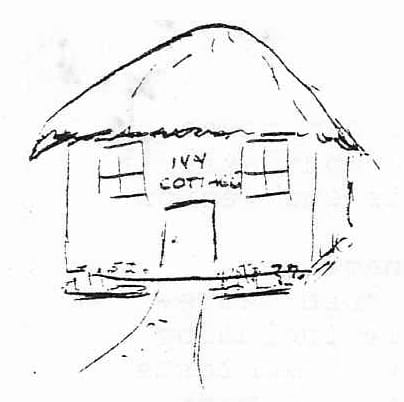
RUNNING RIVER 8 - 9 NOV 86
As the title implies this article is on the Running River weekend. Though on first impression I could not imagine where the name had been begat.
Originally the plan had been to do Mount Spec. (whatever that means). The view from Ivy Cottage was really picturesque and the birds appreciated our visit.
Due to the predictable damp weather a round table convention decided on Running River as a suitable alternate venue. An hour or so down the western side of Mount Spec brought us to a very dry Running River.
No map or guiding star left us with our faith totally in Alan's skills in bushcraft. And a fine job he did too, apparently arriving at just the spot he had intended on the river. After scaling some rather arid garmas en route.
The lunch spot we were assured had lots of water in it last time. I was beginning to think that Mount Spec in the rain would have been preferable to this hot dry riverbed.
However, as the afternoon progressed the river did show its true colours with some very beautiful and refreshing pools amid warm worn rock. And so on at last to the night campsite, a quick dip and houchy up on the sand. Someone had a fire going all ready so into the ration pack (what a mistake that turned out to be). Tried some fishing but that was a joke. So, gathered around the fire for a word from the wise. Air-bed's flat but that didn't stop my slumber.
Up for a quick dip and more ration pack (yum), more heat, rock, water and interesting conversation. Lunch the second day, was a languid affair atop a waterfall that had a very large plunge pool (Jump pool). There were several more swims, lots of rock-hopping, bush-bashing, climbs up hills and down dale, and at last, the cars.
I must mention one wandering sole who had gone ahead out came in behind. He arrived too soon for us to have the billy going so we were forced to ajourn to the Hidden Valley Inn, (very rustic) lots of interest in the accomodation ?
All in all a most enjoyable weekend trip in an area that I hope to explore in more depth at a later date. My thanks to Alan for leading us through the weekend without his knowledge of the area we would have, no doubt, been lost.
P.R.G MORGAN
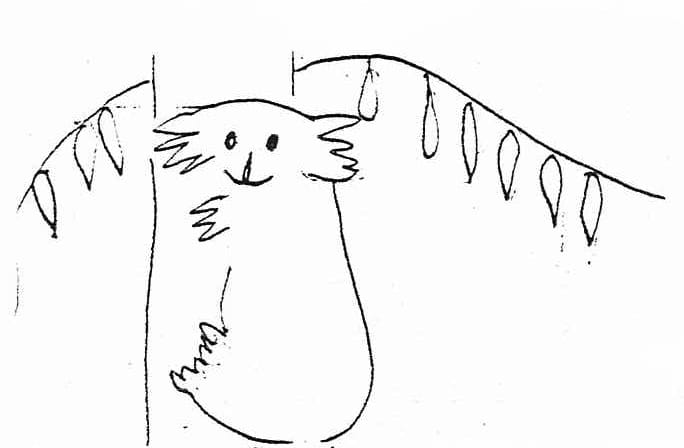
BLUE GUM CREEK
On the weekend of 16-17 August John Stevens led a small but intrepid group on a loop trip from Paluma which, despite some challenging portions and less-than-lovely-weather, we thoroughly enjoyed. It happened this way.
Nine of us set out; John Stevens, John Hunter, Anne, Ted, Jim, Ched, Bill, Tony, and myself. After about two hours of walking along an easy-to-follow 4wd track we reached a fork in our road. The track John had originally planned to take was too overgrown to follow. The alternative meant a longer walk. By this time it had begun to rain and it was either this or the longer track or perhaps a combination of the two that caused a decision to be made. Four people turned back. I won't name names but John and John, Bill, Tony, and myself (obviously made of sterner stuff) carried on.
Soon the rain stopped. We walked out along a ridge and then finally down towards a creek. It wasn't easy walking at this point but later we picked up some cattle tracks and were able to move at a good speed.
We camped in a large beautiful clearing close by Smith Creek. The campfire that night was enjoyable though it was then that Bill discovered his first leech. We assured him he would not bleed to death but he wasn't easy to convince.
Walking on Sunday morning began with easy steps through a flat grassy area. Later we walked along Blue Gum Creek. This was fine until the rain began. It was no light drizzle. The creek was beautiful but our enjoyment of it was hampered by difficult footsteps. Eventually we left the creek and began the slow, steady slog uphill and back to the road and the cars.
We were wet, cold, and tired when we reached the vehicles. Tony turned on the stove in the combie and we warmed ourselves with tea and coffee before heading home.
John Stevens is to be congratulated and commended. He did a terrific job as leader of the walk.
MARY JANE HENDERSON
RELAXATION
Harry Kershaw
My Canberra friends Jim and Diane are busy people, both having demanding jobs. Not withstanding, they took me out and around the town in the evenings. But one night Jim didn't get in until 9 pm and, after the late meal, we flopped out on the large settee and I made a suggestion - would they like to relax whilst I read a little of my writing from manuscript. I chose an incident from the first chapter of my book, "Green Daylight".
Easter 1932
Juniper Gulf
"What is there in this life, for me,
But that which I might know and see?
And what becomes of all I see and know,
If I let go?"
G.W.Y.
In his "The Craysman", Geoffrey Winthrop Young, the famous mountaineer, could almost have pictured our epic adventure in the depths of Juniper Gulf.
I had been roaming around the Lake District for two weeks before Easter, and as a result was fighting fit, which was just as well the way things turned out.
Juniper Gulf is a super-severe pot-hole not far from Gaping Ghyll and the N.C.F.C. decided to make camp near the pot-hole itself. With quite a large gathering - usual at Easter holiday - besides the usual muster of tents was an army bell tent which did service as a meeting hall, conference room and sing-song theatre. Good Friday morning was spent getting camp fixed and the afternoon in rigging the first, daylight depth of 80 ft., then pulling and tugging the many rope ladders and line through tortuous narrow passages, down the 50 ft. pitch and more passages to dump a load of gear at the top of the Big Pitch. Quite a busy afternoon, but tomorrow was to be the Big Day when we would bottom the hole. After tea we squeezed into the bell tent to sing and hear bawdy ballads and jokes, products of our Leeds University contingent.
But Saturday morning, surprisingly early, saw us making our way down: comparatively easy now for the ladders were already rigged and we were only lightly burdened by our lamps and a day pack with food. Now, a large drop at the nether end of a pot-hole constitutes a great difficulty, (make this one super-severe) we knew that, but did not contemplate that our gruelling test was to come from a totally unexpected source.
Our progress was good as we merrily tied and slung ladder after ladder into the dark "Gulf" - two hundred feet of it - we deemed it sufficient to reach bottom and by 9 am our first man, fastened on 200 ft. of stout line, was over the top and warily treading rungs into the gloom. It seemed an awfully long way down - only a pin-prick of light and a very faint whistle signal to haul up the life-line.
I went third, and when I joined the other two we decided to go down the sloping ledge and so to the deep canal of no further advance.
Coming back to the foot of the ladder we were astonished to see many dots of light at the top but no one had descended! They saw us and a great roaring ensued. In a large cavern it is nearly impossible, owing to the reverberating echoes, to have a long-distance conversation! They were obviously trying to tell us something but it reached us as a quite unintelligible booming and our whistle signals were not so replete as to tell us of the disaster! After the first bedlam, by means of slow, sustained, single syllables, we eventually got the message - LIFE --LINE—STUCK!
Editor - Life Line Stuck! What are they going to do now? Hold out for the next exciting part in Harry's adventure in our next issue!!!!
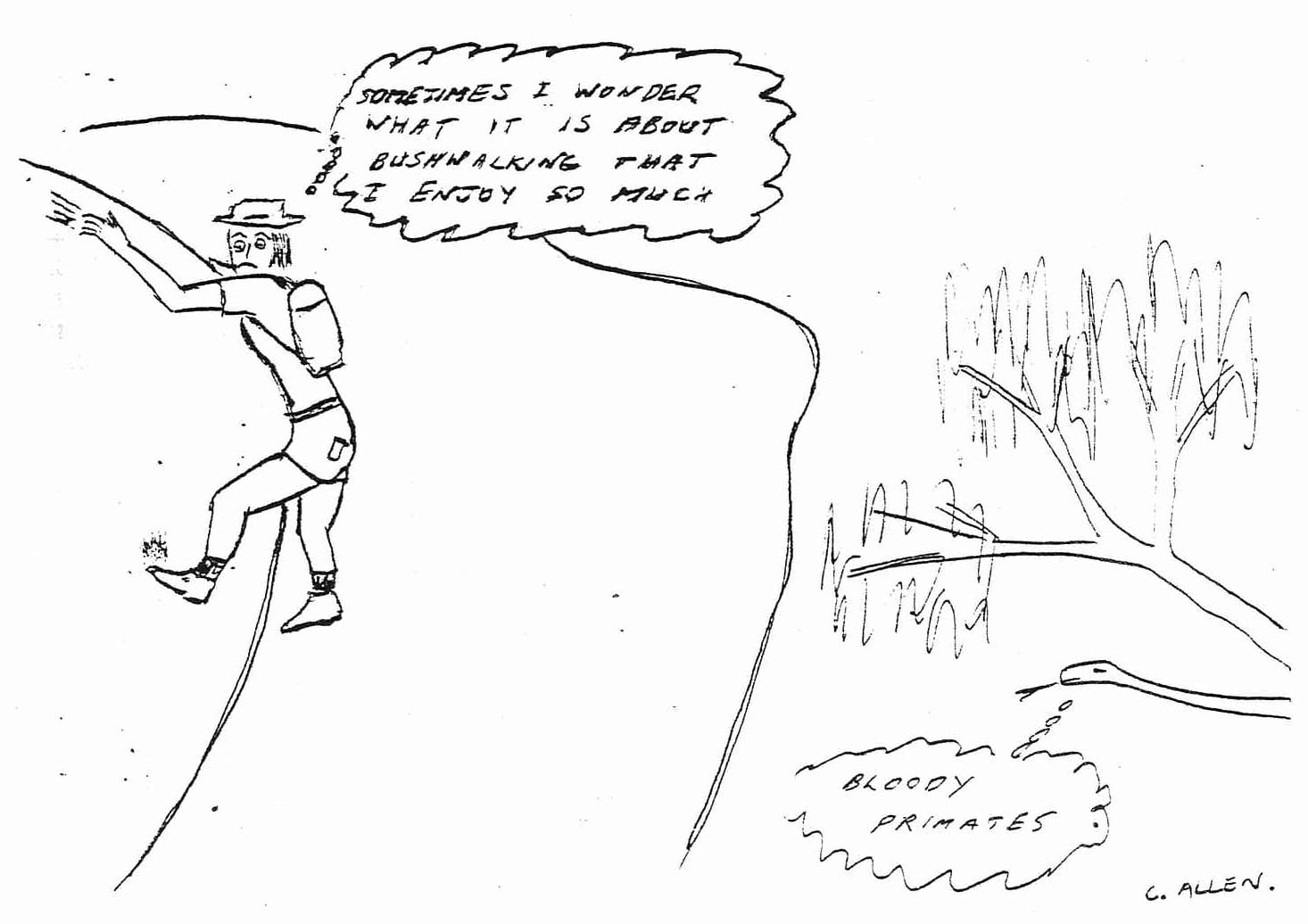
EASY ROCK-HOPPING
This article is written in defense of the newcomer to bushwalking who has to come to grips with rock-hopping.
Rock-hopping to most of us is second nature only because most of us have been through the tribulations of it. In other words, the school of hard knocks. Learning to become a rock-hopper goes in three stages.
- Overcoming personal fears (eg. heights), making decisions (eg. to jump or not to jump), and gaining confidence to take their stride to further limits (eg. learning correct feet placement and stance).
- The ability to plan footsteps ahead to avoid obstacles (eg. a dry patch across the waterway), and maintain an even level to avoid unnecessary climbing up and down. This is to conserve energy if carrying a weekend pack. To be able to keep a steady pace and negotiate difficult sections with limited assistance.
- To be confident and competent in all situations and conditions (eg. adverse weather conditions and/or greasy rocks), and observe the landscape for features for the return segment of the trip and for the next return trip.
JIM CAMERON.
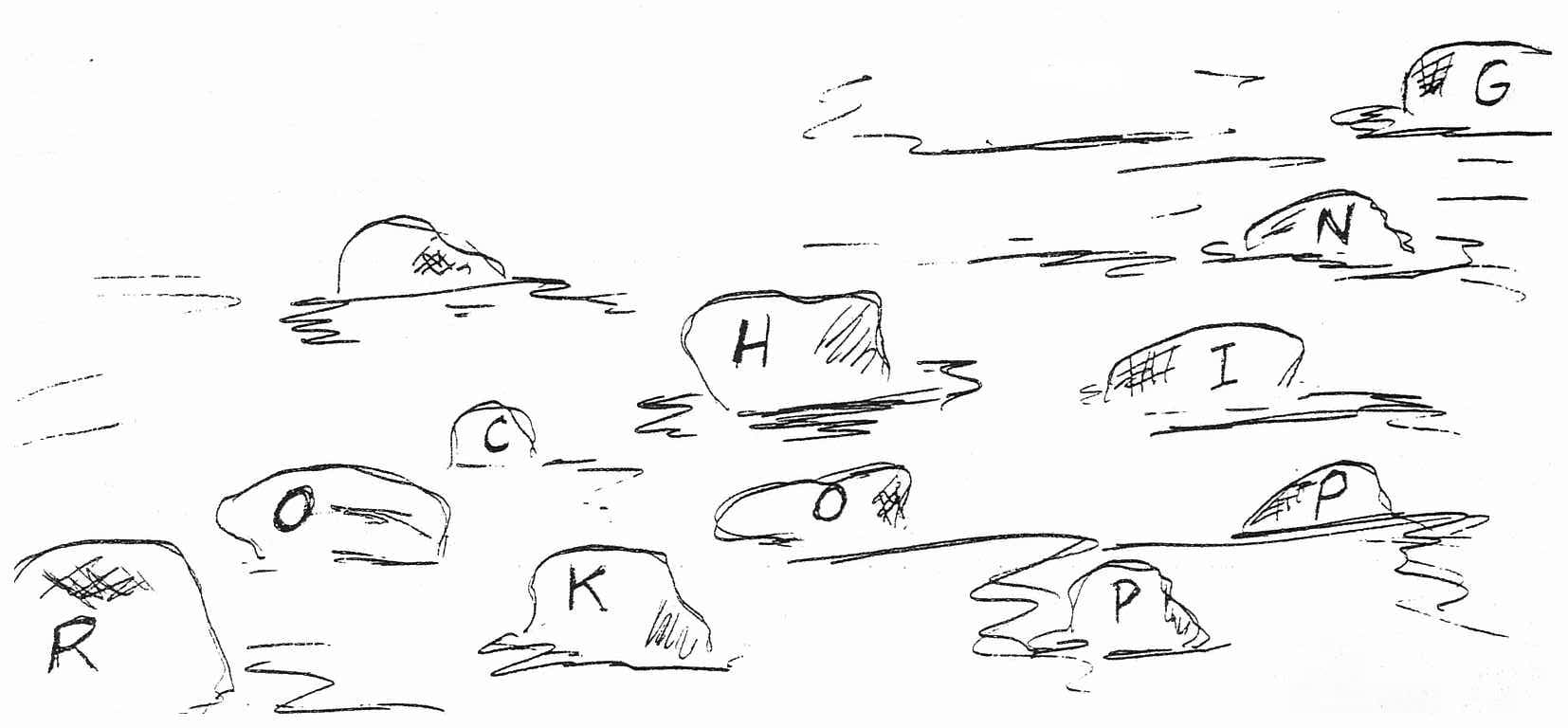
DOWN TO BLUE GUM CREEK
19th January
It was one of those unpublicised walks, kept for the select few which happen to know. On that Sunday morning, Ted, Ann, Jim and I, braving the threatening rain, were heading north for Paluma. It was drizzling on and off as we made our way along the Bruce Highway. Little could be seen of the Paluma Range as the cloud ceiling was quite low.
We left my car parked off the road, 1.5 kms west of Paluma township, near the entrance to an old logging road. For the first 35 mins we generally walked along that logging road, in a southerly direction and mostly through rainforest. A few minutes after crossing the boundary between the rainforest and eucalypt forest we emerged on a rocky outcrop overlooking a creek. Nearby were the remains of an old mine, complete with ore crushing equipment, rusty bed base and some cooking utensils.
200 metres further down, we reached a waterfall feeding into a rock pool. The water ther was anything but limpid, making the pool and its contents look like an oversized cup of tea. From there on, we followed the creek bed. Although the rocks were wet and rather slippery, the going was easy because of the absence of waterfalls and large rocks. After another 300 metres, we reached the junction with the creek coming down from the pumping station, Blue Gum Creek? Jim decided not to go any further. Since it was too early for lunch, Ted, Ann and I continued down the creek.
The creek bed from there on was flatening. Another 300 metres saw us at the junction with another creek flowing from the east. The valley began widening and within 100 metres we reached a large pool surrounded by palm and pandanus trees. The going further downstream appeared to be getting even easier. Since we were not out to strain ourselves, we did not go any further. We stopped there for lunch and a swim.
We walked out the same way as we walked in, in 1 hr 30 mins from our lunch place. Altogether it was a rather easy, relaxing walk, a great way of spending a Sunday away from the coastal heat. As a bonus, we had found a potential walk, which would involve following the creek further downstream.
JPS
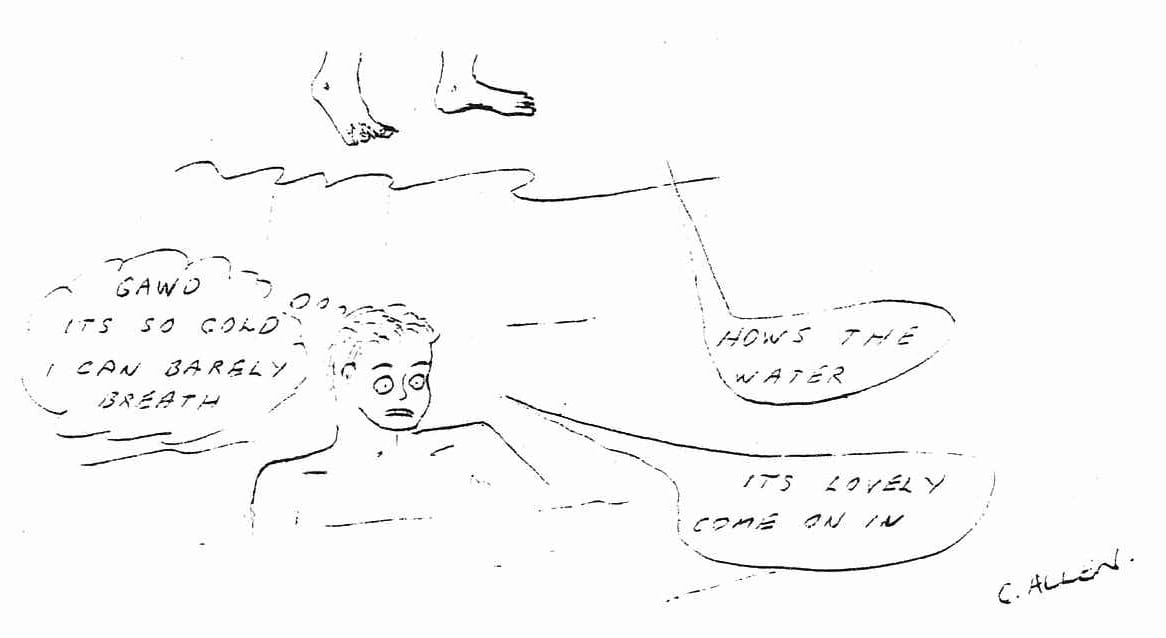
BARTLE FRERE
On October 10th after a day in Townsville sitting at home wondering if the weather would clear up I packed my gear and went on "the bushwalk of the year" -— Mt. Bartle Frere. At first it seemed that this, like so manywalks before it, would be rained out. It poured rain all the way to Cardwell. After Cardwell the wet weather practically stopped. The sky was still overcast but at least for that moment it seemed that things were holding. As we pulled into the Josephine Falls picnic area, where we were to camp that night, it started to drizzle. As it turned out I spent over an hour putting up Ted's tent in the pouring rain. When I finally had the wretched thing up I collapsed inside hoping to get as much shut-eye as possible before the big climb the next day.
This is as good a time as any to give the reader some background information. Bartle Frere is the highest mountain in Queensland at just over 1600 metres. It is the highest point in the Bellenden Ker Range which borders the Atherton Tablelands. On a clear day the mountain is an impressive sight. It can be seen from almost all of the Tablelands as well as Innisfail and the surrounding area. The mountain has some magnificent stands of rainforest. Unfortunately, the eastern face was swept by Cyclone Winifred earlier this year and the rainforest was all but destroyed on that side.
I awoke the next morning to hear a bird calling. I realized that the rain had stopped. As quickly as I could manage I put my thongs on and jogged to the end of the road to see the whole of Bartle Frere cloud-free. I was overjoyed as I knew without a shadow of a doubt that we would be climbing that day.
It wasn't long before we had our gear packed and were on our way. The track to the face of the mountain went through some high stands of rainforest and also more gympie than I'd ever seen. It wasn't long after this that the track started to climb. Eventually we reached the creek. This was our last water-stop before the top of the mountain. The trail was every bit as steep as I had been told and in some places we were literally grabbing roots to hoist ourselves up. Because of the damage done by the cyclone we had great views almost all the way along the trail.
We eventually entered the cloud at about 3,500 feet. This gave the forest an unmistakable dream-like quality. It was a damper environment and it brought out the leeches. However, I had an ample supply of Rid and literally covered myself with the stuff. Another thing you get on Bartle Frere are large flies that look and sound exactly like bushflies. These slow-moving creatures fall easy prey to the swat of a hand and, as I found out, don't even bite.
As we neared the top of the mountain we side-tracked through some mossy rainforest in the direction of the tin mine where we camped that night. The rainforest ceased rather suddenly and we found ourselves in a mossy, bare alpine area. It was surprisingly warm for 4,500 feet but that was because it was the heat of the day. Another thing I noticed was how dry everything was up there. We arrived at the camp to be greeted by Greg, Graham and Marion who had arrived on Friday. I was beginning to feel this was going to be a very crowded campsite.
Nothing much happened the rest of Saturday and the clouds didn't clear much so I sat on a rock ledge and watched the clouds drift past. This was a unique experience I can tell you. Later that afternoon the others arrived and I was glad we were one of the first few people into the campsite because by the time everyone arrived it was pretty crowded.
That night the weather closed in with foggy clouds and misty rain that reminded me of London weather. I had brought along plenty of cold-weather clothes that all came in handy that night. The odd thing about Bartle Frere weather is that even if it's cold outside it is still very humid so you need to drink lots of water during the night.
Spirits really began to drop the next morning when we awoke to find that we were still clouded in. Were we in for a surprise! At about breakfast time the whole sky cleared and the view was breathtaking. If we looked to our right we looked out on the wide expanse of the Atherton Tablelands. Looking straight ahead we saw mountain range after mountain range. I believe it was clear enough to see all the way to Townsville, at least 300 Km away.
The change in the weather made us extra confident of good views as we made our way to the summit. The route to the summit follows an interesting course. There is everything from a dwarf rainforest no taller than a man, to a hair-raising boulder course where we followed the pink arrows. Soon we were only a hair's breath from the summit so I decided to make the final dash for the top.
The climate at the top was exhilarating with an icy wind blowing and a rocky lookout from which we could see down to Babinda and the surrounding country side more than 5,000 feet below. Another unique feature of the summit area is a bright orange slug that is found on the stunted trees near the top. As far as I know, this slug is found nowhere else around this area.
Bartle Frere is a true mountain and people should treat it as such but for those who do try it awaits a really unique adventure in tropical North Queensland.
BILL KINSEY
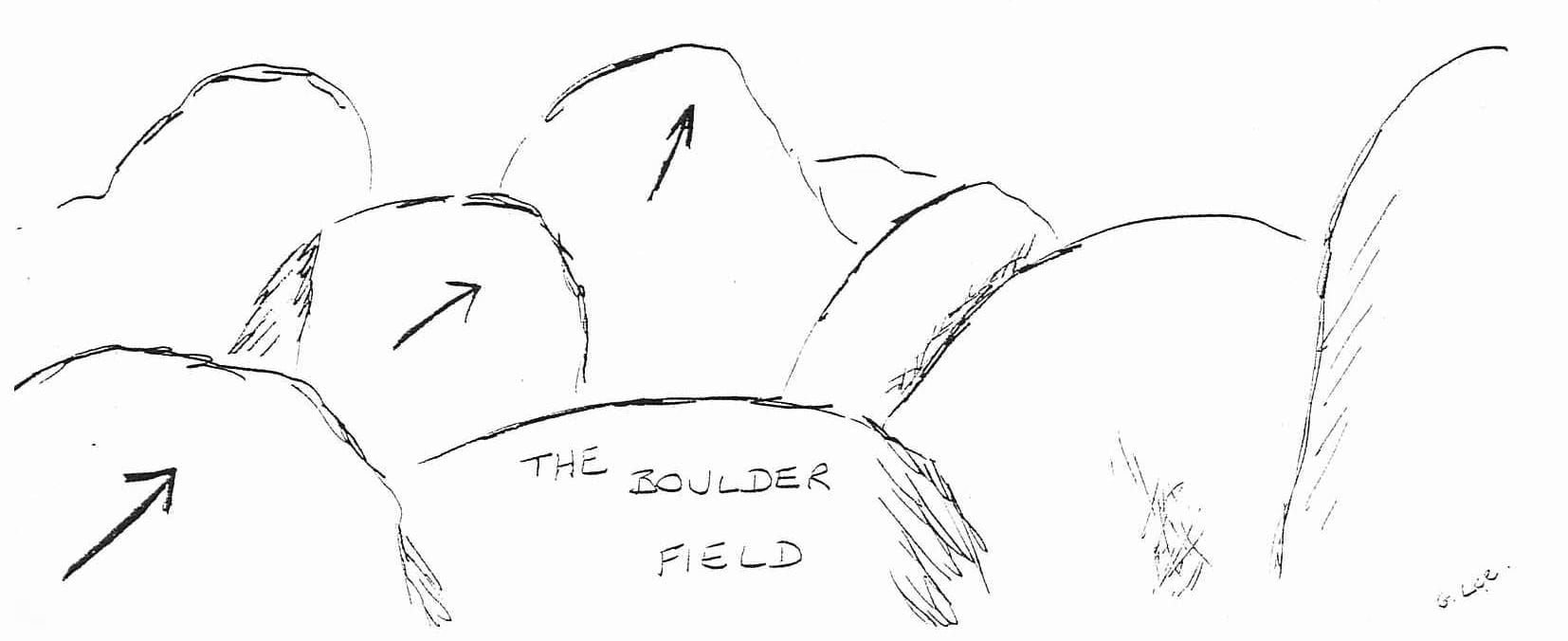
1986 BUSHWALKERS' PUZZLE
Use the clues below to write the words across.
Then read down the middle to uncover this year's most popular day-walk.

1. It's 1612m high.
2. Predominent bushwalking weather this year
3. ----
4. Rainforest creatures
5. The slugs on Bartle Frere are this colour.
6. Worst bushwalk of 1986
7. ---
8. Bushwalkers' favourite O/S holiday spot
9. Basalt Wall birthday girl
10. Tully Gorge activity
11. Palm, Hencamp, Waterfall, etc.
ONONGE - FANE
(J. P. Stevens) 10-12 AUGUST 1985
Jacksons' Airport, 6.00 a.m. Daylight is breaking and the early morning mist is still hugging the nearby hills. In the distance, the peaks of the Owen Stanley Range, surrounded by morning clouds, form a barrier hiding the rising sun. Weather conditions look favourable today and hopefully our pilot should not be long.
Standing beside me in front of Central Air Services' locked gates are another 4 bushwalkers: Andrew Gibbons, David Grey, Stephen Wright and Pat Baker. The area we are heading for is about 170 kms north of Port Moresby and is commonly known as the Goilala. Andrew, David and Stephen have accompanied me on several of my previous walks in this area. Pat is making her first trip there. As for me, it will be the eighth week-end trip I'll lead in the Owen Stanley Range this year. This week-end, our walk will be between Ononge and Fane, two catholic missions.
The Goilala was first explored late last century by catholic missionaries of the order of the Sacred Heart. Over the years, these missionaries gradually moved inland, building supply trails and churches as they went. By the middle of this century the missions were well established and were linked by graded trails which were used by caravans of pack horses bringing supplies from the Papuan coast. During the 60's and 70's most missions built airstrips to speed up travel to and from Port Moresby. Another reason was that pack trail maintenance was taking too much of their time. Left without maintenance, these trails quickly deteriorated. Rapid rainforest regrowth and frequent landslides made them impassable in many places in a matter of years. My aim is to follow one of these old pack trails and, if all goes well, we will reach Fane late on Sunday afternoon. I ought to say I do not expect any problem, otherwise I would not have let Pat come along.
In addition to its trails, some more walkable than others, the Goilala's other major attractions are its scenery, its generally friendly natives, its airstrips and its convenient closeness to Port Moresby (POM). Andrew Gibbons in a trip report vividly described the area as follows: "mostly intermitable series of ridges and valleys, foaming rivers, amiable and curious villagers, bright butterflies and orchids and occasional birds of prey, miles of pack trails and forest paths, hilltop missions and 6-seater planes hopping between ski-jump airstrips". It is a mountainous area with dozens of peaks over 3000 metres, separated by deep valleys whose steep sides are frequently covered with grassland, offering magnificent views. Its airstrips are famous for being usually built on ridge tops and up mountainsides. To the traveller, the local missions seem to have engaged in some mindless rivalry as to which would build the most hair raising one.
Travel in and out of the Goilala is generally by plane. Some limited access by road is possible to Tapini, the district headquaters. 4 WDS are recommended and the drive from POM takes between 5 and 6 hours in dry weather. Walking, such as along the old Dubuy Trail between Ononge and Mariboi Plantation, is possible though I would not recommend it. Today, to get to Ononge, we have chartered a Cessna 206 from Central Air Services (CAS), a local air charter company which is virtually bankrupt. The plane is a 6-seater and its underbelly cargo bay will accommodate our packs.
On the airport side of the fence, there is some movement. Peter, CAS' chief and only remaining pilot, is comming out of the tarmac area and is walking towards us. He does not look too cheerful today. He does not bring any good news either. CAS' only remaining aircraft in a "flying condition" has got a flat battery and cannot be started. Peter tells us that not much can be done until he gets a new battery and this will have to wait until the shops open. He suggests that we should go back home and phone him in another hour. Left with no other choice except cancelling the trip we accept. We get ourselves and our packs weighted and, leaving our packs to CAS' care, we all pile up in my Suzuki Sierra for a hasty retreat. Meanwhile, Peter has borrowed a screwdriver and a pair of pliers out of my tool box and he promises to do whatever he can to ensure that we leave as soon as possible. (It rains almost every afternoon in the mountains and the later we go, the more walking in the rain we are likely to have to do.)
Our retreat takes us to Andrew's flat, in the suburb of Gordons, 5 minutes drive from the airport. 40 minutes later, and well aware of how things work in PNG, I call CAS and I am told that the plane is once again in a flying condition. The pilot is waiting for us. Back to the airport, Peter tells us that using the tools I lent him, and after much trying he was able to start the plane. Even so, he does not guarantee it will start again. Therefore, when we get to Ononge, he will not stop the engine. Since our packs are already loaded into the aircraft all we have to do is step in. After a few minutes spent securing the seats to the floor of the aircraft and ensuring that all safety belts work, we are on our way.
Editor-Thank goodness they are on their way. There are 7 more pages in John's epic to go yet(and this was only a weekend trip!)
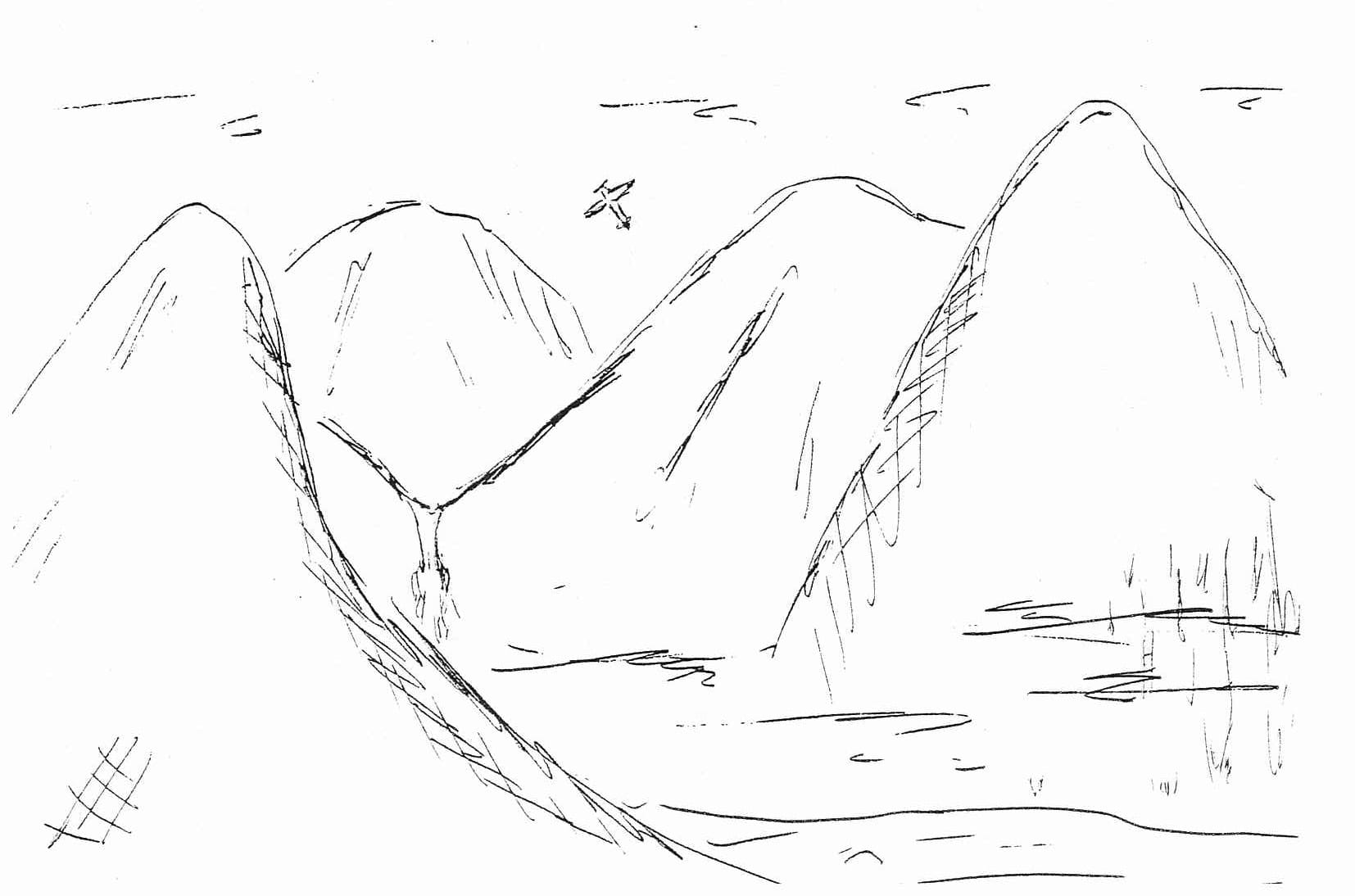
POSITION VACANT
The Job: Weather Forecaster
Qualifications: Expert knowledge of future weather patterns to determine suitability of venues during 1987
Duties:
- To develop and direct a workable trip calendar for 1987
- To provide assistance to trip leaders on possible variations
- To speak openly to members and explain decisions
The organisation: The Townsville Bush walkers which provides excellent bushwalking services to its members. It is an equal opportunity organisation.
Conditions: The position carries a salary, lurks and perks, which will be made available on application.
APPLICATIONS TO THE PRESIDENT
TOWNSVILLE BUSH WALKERS.
